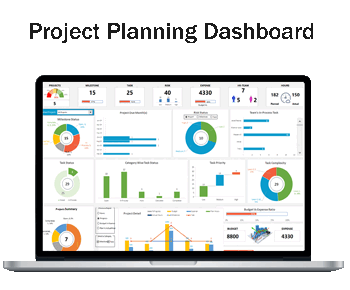Today’s topic: “How To Draw Fault Tree In Excel“. Based on the assumptions and deductive approach of risk management, fault tree analysis is a very useful and comprehensive approach. This analysis is based on a layout in which you can visualize possible failures and a deductive way to approach their maxim reason.
This analysis is highly useful and recommended in almost all kinds of projects such as construction projects, aerospace projects, software development etc.
Using this approach, a structured diagram is constructed for the visual imposition of different steps and procedures, leading to possible risks and failure during a state of working.
By analyzing associated causes and reasons, a manager, supervisor or planner can seek some other ways to complete the task which may avoid possible threats and risky approaches.
You can even draw fault tree on MS Excel which is even much easier to use and understand. There is a descriptive tutorial here which you can read and understand how you can use various features and options of Excel to complete this draft.
Fault Tree Shapes Identification:
Constructer Fault Tree in Excel
Before we tell you how to construct a tree in Excel, you should thoroughly understand the application and utilization of this tree diagram in risk assessment and threat management.
You can arrange both expected and occurred failures in this diagram along with their possible reasons and factors which might generate attractive obstructions in this process.
We have listed a couple of points here, demonstrating a shorthand tutorial for constructing this tree. Take a look on the points below;
List down all the failures, faults and risks highlighted
Draw a column and list all deductive reasons of failure
With a comparison, match least abruptive and unstable approach
Take all stages of a project and organize them step by step
Associate risks of each phase and possible reasons or drawbacks as well
Using Excel spreadsheets, specify assessment and evaluation functions
Instruct the spreadsheet to place certain entries into risk full sections when below certain value limit
You can find the more detailed tutorial for a complex architecture of Excel templates in case you need.
Benefits of Fault Tree
In modern project management, risk assessment and risk management are of core importance. No project can be considered successful unless you remove underlying threats and risks.
A fault-tree enables you to closely monitor and assess the reasons for a possible failure, factors arising this particular situation and steps.
So included in eradicating this failure. It organizes all low potential ends in the form of a branched tree and you can instantly see all associated risk points to avoid any obstruction.
Once you mapped everything on this tree diagram, now you can abandon all those factors from your project and ensure a reliable work plan.
These are certain benefits of fault tree which save your resources and efforts, providing a conjugate basis of success in every dimension.



